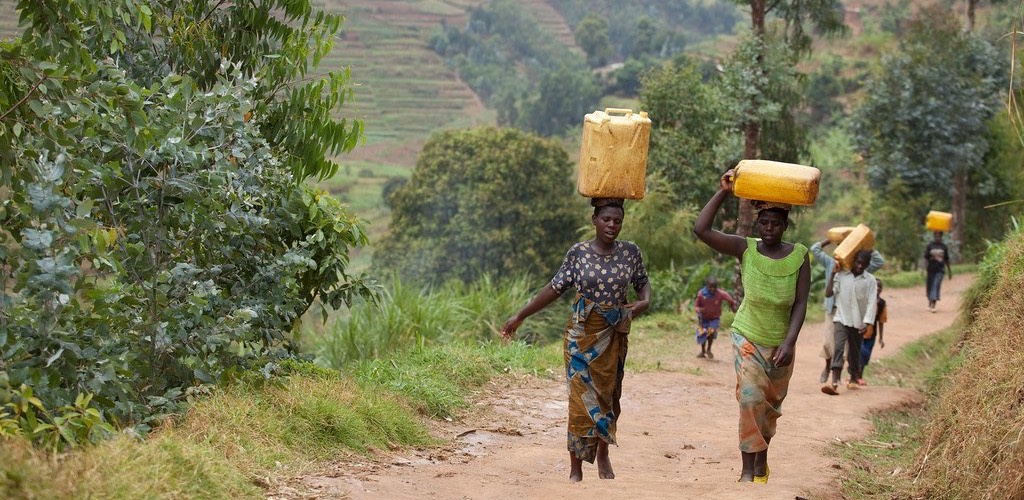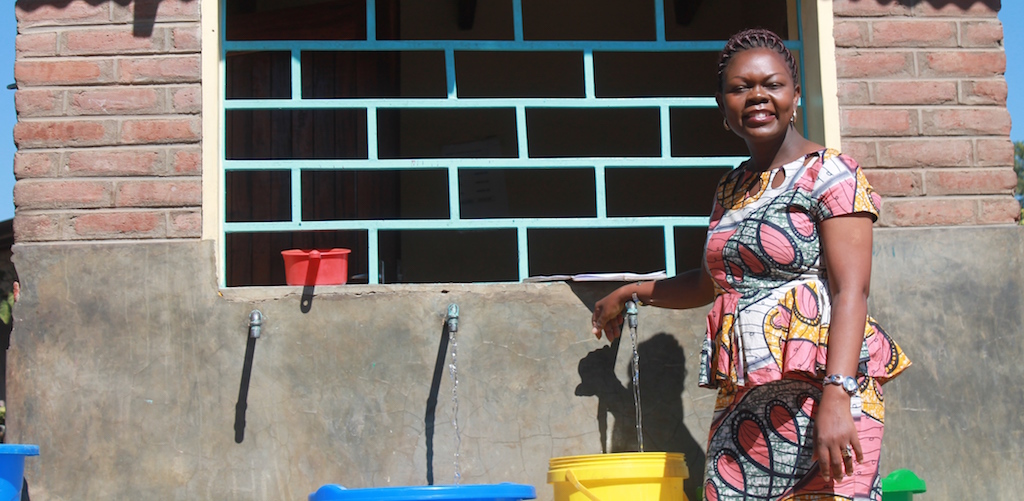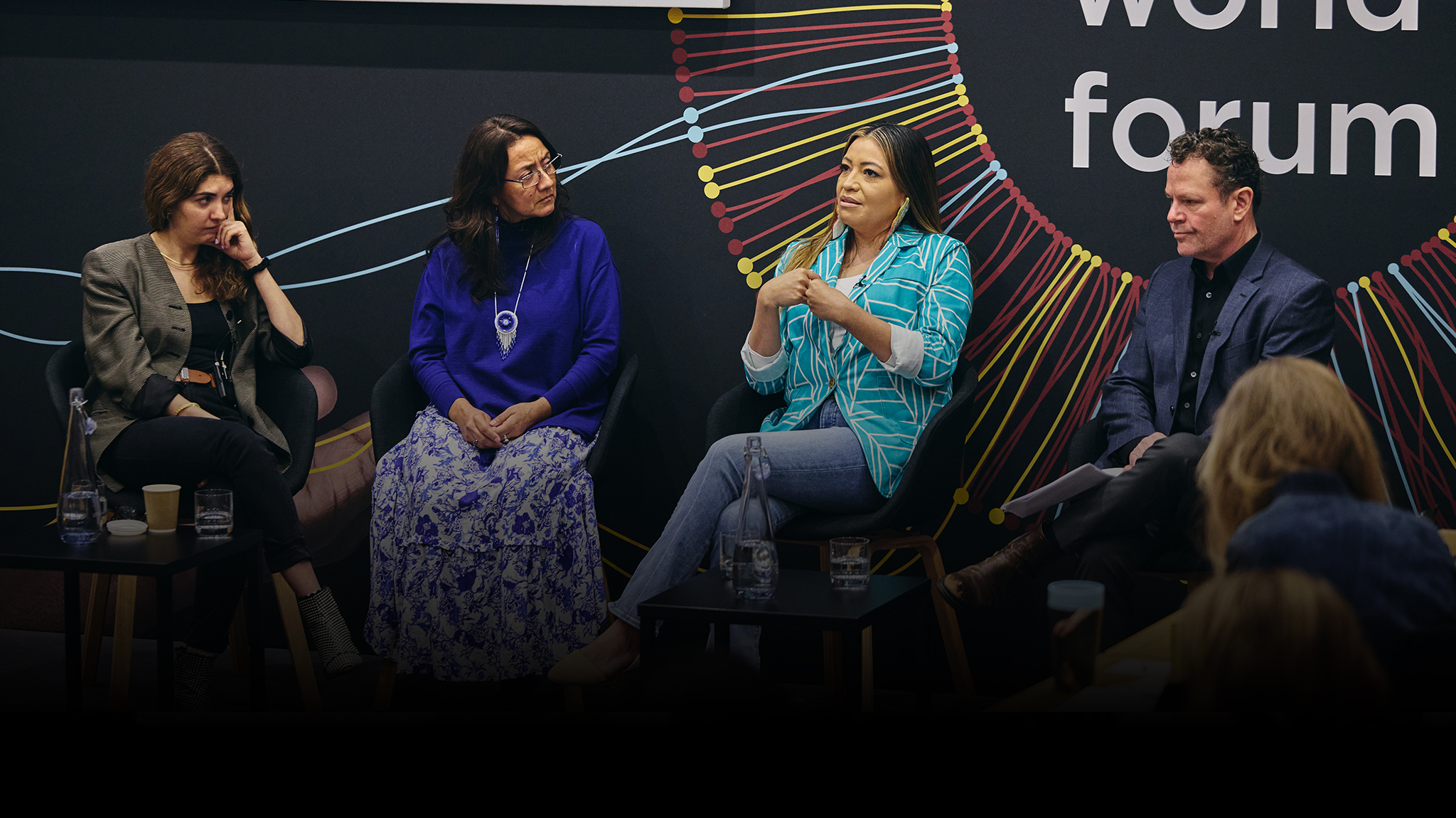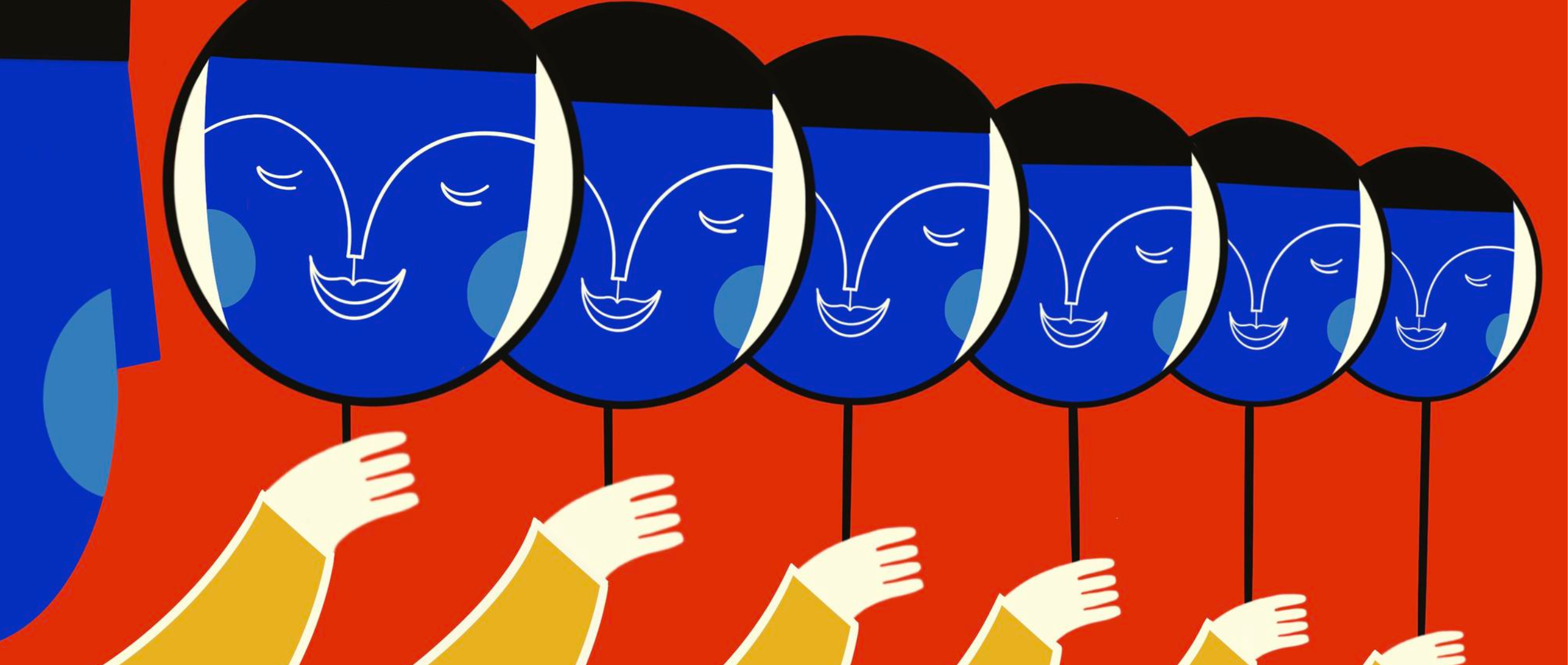I met Maria when I was a Peace Corps volunteer in the Dominican Republic. She was three years old—smiley, pudgy, and fun. I lived with her grandparents. We spent a lot of time together, playing games like hide-and-seek, chase the chickens, and her favorite: imitating la gringa.
Then one Thursday, Maria died. Of diarrhea, from drinking dirty water contaminated with human waste.
Every day, 1,500 children under five die from diarrhea. That’s about 500,000 a year, or about seven football stadiums.
Maria’s death changed my life. I learned about the critical role that water plays in the tenuous balance between life and death. I decided to dedicate my life to clean water. Today I head an organization called Water For People, and our mission is to bring clean water and toilets to everyone, forever.
Most of us have clean, safe water, and we don’t think twice about it—we take it for granted. But a quarter of the world’s population doesn’t have access to clean water, and more than a third doesn’t have access to toilets. This is a global water and sanitation crisis. It affects billions of men, women, and children all over the world.
But water and sanitation is mostly a women’s issue. The greatest impact of this crisis falls on them. There are three reasons for this.
The first reason is time: the burden that falls on women of collecting water and bringing it home. This happens in the majority of households in developing countries. For hours a day, miles a day, women go to creeks, community wells, or—in the best situations—community taps. They collect and carry water with their babies on their backs, and with the help of their daughters.
The water they collect may be clean, dirty, or somewhere in between. They don’t know if they or their families will get sick from drinking it.
Take Giselle, a mother I met in Rwanda. Every day she walks a dusty, dirty road in bare feet—a mile in each direction, twice a day. That’s four hours of walking for water. At the well she fills her five-gallon jerry can with water, and someone helps her lift the 40-pound load onto her head for the journey back.

Photo: Giselle and friend carry water back to their village
We need to get water closer to where people live—ideally in their homes and schools, just like we have it. Why should anyone have anything less?
The second reason why water is a women’s issue is education. Imagine what these kinds of conditions would do to your daughter’s education, if she had to walk for water every day, day in and day out.
Kate, who runs our program in Malawi, had to walk for water every morning when she was growing up—three hours a day. She was fortunate enough to also get an education, while many of her peers could not. Today, Kate wants her daughter, Taku, and all the other girls in Malawi, never to have to walk for water. She wants them to use their heads for thinking, not for carrying water.
If we can get girls like Taku to go to school, and stay in school, then the dreams mothers have for their daughters—to have even better lives than they had—can become a reality.
The third reason why water is a women’s issue is toilets—or lack thereof. Most schools in the developing world don’t have toilets. That means that when girls hit puberty and get their periods, they often drop out of school because there’s no place to change their pads.

Photo: Kate, who runs Water For People’s Malawi program
A third of the world has no access to toilets. So where do people go? Wherever they can. In the bush, in the fields, on railway tracks—they’re forced to engage in open defecation.
Then when it rains, all this human waste washes into the community water supply. People end up washing in it, cooking with it, and drinking it.
This is exactly what killed Maria—for me, that’s the most infuriating part of this story. And the worst part is that her mother probably gave her the contaminated water that killed her, because she didn’t know the consequences of her actions.
There’s another compelling reason why toilets are important: safety. Women who don’t have a toilet may wait all day to go to the bathroom. At night, they slip out under cover of darkness, and confront the risk of being raped as they go out to relieve themselves. Everyone deserves the safety and the dignity of a toilet, especially women.
Time, education, and toilets—these are three reasons why water is a women’s issue. So how are we going to solve this crisis? The solution is to educate, build, and invest.
We need to educate people all over the world about why toilets are important. We need to build both the missing water and sanitation infrastructure, and also the institutions that can operate and maintain this infrastructure for generations to come.
That’s exactly what we did in my country, the United States, over the past two hundred years. I think we need to pay it forward, and I hope you’ll agree.
We need to pay it forward through investment, to the tune of $50 billion a year between now and the year 2030. That’s the year that the nations of the world have agreed on as the deadline for delivering water and toilets for everyone, as part of the UN’s Sustainable Development Goals.
Today, government, corporate, and philanthropic investment in water and sanitation totals only about $10 billion a year. So we need to step things up. We all need to work to close the gap.
Fifty billion dollars may sound like a lot of money, but it’s not. It’s what shoppers spend in the US every Black Friday, the annual national shopping spree that coincides with the Thanksgiving holiday. I think water and toilets are a better investment.
In the countries where Water For People works, people certainly understand the value of investing in water and sanitation. Take Elizabeth, a woman who lives with her two daughters and four grandchildren in a village in Uganda. We were developing a water system quite far from her home, and she saved up a lot of money to connect her village to the system.
I went to meet Elizabeth, and I asked her why she was willing to spend so much on water. She told me she had a vision for a business—a chicken farm, that would only be viable with access to clean water. Today she supplies her entire village with eggs—and the village children don’t walk to get water, they have better hygiene, and they stay in the school. Clean water transforms the lives of individuals and communities.
What are you going to do to solve the global water and sanitation crisis?
I’d like you to spread the word. Share the virtues of toilets and taps—how they improve people’s quality of life, save lives, and create livelihoods. Talk about Maria, dying of diarrhea. About Giselle, and her long walk for water. Kate, bringing access to clean water and education for girls. Elizabeth, and how clean water helped her lift her family out of poverty.
The year 2030—the date the world has agreed on to provide water and toilets for everyone—isn’t that far away. I believe we can solve this crisis, but it’s going to take determination to educate, build, and invest.
Our goal is simple: toilet and taps—and triumph for women. Let’s do it together for everyone, forever.


